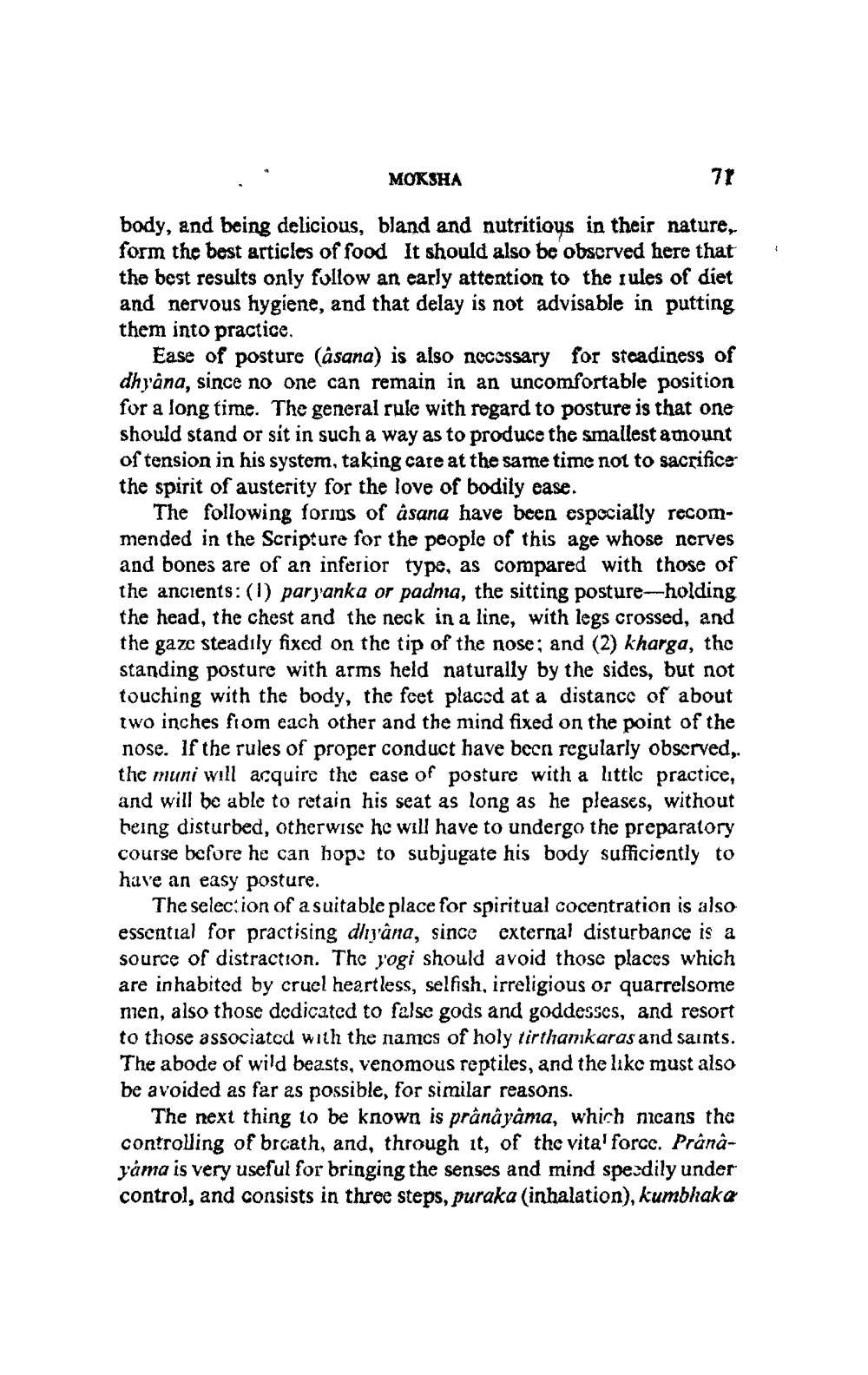________________
MOKSHA
71
!
body, and being delicious, bland and nutritioys in their nature, form the best articles of food It should also be observed here that the best results only follow an early attention to the rules of diet and nervous hygiene, and that delay is not advisable in putting them into practice.
Ease of posture (asana) is also necessary for steadiness of dhyâna, since no one can remain in an uncomfortable position for a long time. The general rule with regard to posture is that one should stand or sit in such a way as to produce the smallest amount of tension in his system, taking care at the same time not to sacrifice the spirit of austerity for the love of bodily ease.
The following forms of asana have been especially recommended in the Scripture for the people of this age whose nerves and bones are of an inferior type, as compared with those of the ancients: (1) paryanka or padna, the sitting posture-holding the head, the chest and the neck in a line, with legs crossed, and the gaze steadily fixed on the tip of the nose; and (2) kharga, tho standing posture with arms held naturally by the sides, but not touching with the body, the feet placed at a distance of about two inches from each other and the mind fixed on the point of the nose. If the rules of proper conduct have been regularly observed, the muni will acquire the case of posture with a littlc practice, and will be able to retain his seat as long as he pleases, without heing disturbed, otherwise he will have to undergo the preparatory course before he can hope to subjugate his body sufficiently to have an easy posture.
The selection of a suitable place for spiritual cocentration is also essential for practising dhyana, since external disturbance is a source of distraction. The yogi should avoid those places which are inhabited by cruel heartless, selfish, irreligious or quarrelsome men, also those dedicated to false gods and goddesses, and resort to those associated with the names of holy tirthamkaras and saints. The abode of wild beasts, venomous reptiles, and the like must also be avoided as far as possible, for similar reasons.
The next thing to be known is prânâ yama, which means the controlling of brcath, and, through it, of the vita' force. Prânâyama is very useful for bringing the senses and mind spezdily under control, and consists in three steps, puraka (inhalation), kumbhaka




